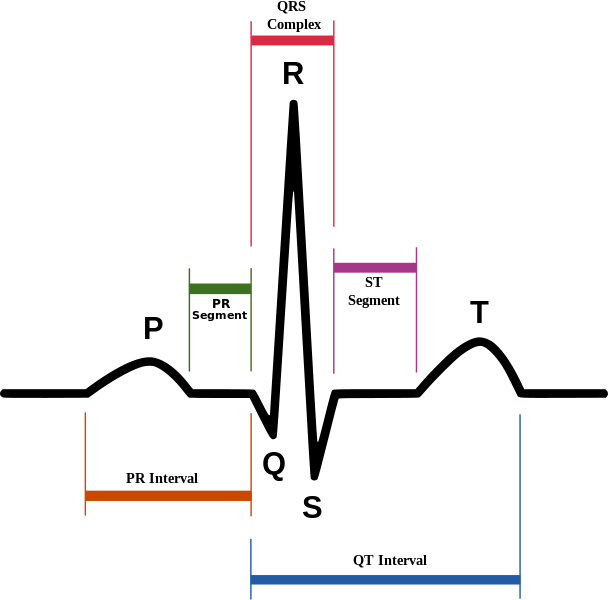WBR0438: Difference between revisions
Jump to navigation
Jump to search
Rim Halaby (talk | contribs) (Created page with "{{WBRQuestion |QuestionAuthor={{Rim}} |ExamType=USMLE Step 1 |MainCategory=Physiology |SubCategory=Cardiology |MainCategory=Physiology |SubCategory=Cardiology |MainCategory=Ph...") |
m (refreshing WBR questions) |
||
| (3 intermediate revisions by 3 users not shown) | |||
| Line 1: | Line 1: | ||
{{WBRQuestion | {{WBRQuestion | ||
|QuestionAuthor={{ | |QuestionAuthor= {{YD}} {{Alison}} (Reviewed by Serge Korjian) | ||
|ExamType=USMLE Step 1 | |ExamType=USMLE Step 1 | ||
|MainCategory=Physiology | |MainCategory=Physiology | ||
| Line 8: | Line 8: | ||
|MainCategory=Physiology | |MainCategory=Physiology | ||
|SubCategory=Cardiology | |SubCategory=Cardiology | ||
|MainCategory=Physiology | |||
|MainCategory=Physiology | |MainCategory=Physiology | ||
|MainCategory=Physiology | |MainCategory=Physiology | ||
| Line 20: | Line 21: | ||
|MainCategory=Physiology | |MainCategory=Physiology | ||
|SubCategory=Cardiology | |SubCategory=Cardiology | ||
|Prompt=A 73 year old | |Prompt=A 73-year-old man with hypertension presents to the emergency department for dyspnea at rest. Following appropriate evaluation, the patient is diagnosed with heart failure. The physician explains to the patient that his ventricles are not appropriately relaxing and filling. Which phase on electrocardiography (ECG) scheme shown below represents ventricular relaxation and filling? | ||
|AnswerA=PR | [[Image:Normal ECG.png|400px]] | ||
|AnswerAExp=PR | |Explanation=Upon [[ECG]], waves represent [[depolarization]] and [[repolarization]] effects, while baseline represents the absence of net depolarization or repolarization, frequently observed in cases of muscular rest or contraction. On ECG, [[P wave]]s represent [[atrial depolarization]], [[PR segment]]s represent [[AV nodal delay]], [[QRS complex]]es represent [[ventricular depolarization]] and simultaneous [[atrial repolarization]], [[ST segment]] represents time during which [[ventricular]] contraction is occurring, [[T wave]] represents [[ventricular repolarization]], and [[TP interval]]s represent the time during which ventricles relax and refill. | ||
|AnswerB=ST | |AnswerA=PR segments | ||
|AnswerBExp=ST | |AnswerAExp=PR segments represent AV nodal delay. | ||
|AnswerC=QRS | |AnswerB=ST segments | ||
|AnswerCExp=QRS | |AnswerBExp=ST segments represent ventricle contraction. | ||
|AnswerD=QT | |AnswerC=QRS complexes | ||
|AnswerDExp=QT | |AnswerCExp=QRS complexes represent ventricular depolarization and simultaneous atrial repolarization. | ||
|AnswerE=TP | |AnswerD=QT intervals | ||
|AnswerEExp=TP | |AnswerDExp=QT intervals represent total duration of ventricular depolarization and repolarization. | ||
|AnswerE=TP intervals | |||
|AnswerEExp=TP intervals represent ventricular relaxation and refilling. | |||
|EducationalObjectives=On ECG, [[TP interval]]s represent ventricles relaxing and refilling. | |||
|References=Berne RM. Cardiovascular physiology. Annu. Rev. Physiol. 1981;43:357-358 | |||
|RightAnswer=E | |RightAnswer=E | ||
|WBRKeyword=ECG, | |WBRKeyword=ECG, Electrocardiogram, Ventricle, Cardiovascular physiology, Ventricular relaxation | ||
|Approved= | |Approved=Yes | ||
}} | }} | ||
Latest revision as of 00:33, 28 October 2020
| Author | [[PageAuthor::Yazan Daaboul, M.D. (Reviewed by Alison Leibowitz) (Reviewed by Serge Korjian)]] |
|---|---|
| Exam Type | ExamType::USMLE Step 1 |
| Main Category | MainCategory::Physiology |
| Sub Category | SubCategory::Cardiology |
| Prompt | [[Prompt::A 73-year-old man with hypertension presents to the emergency department for dyspnea at rest. Following appropriate evaluation, the patient is diagnosed with heart failure. The physician explains to the patient that his ventricles are not appropriately relaxing and filling. Which phase on electrocardiography (ECG) scheme shown below represents ventricular relaxation and filling? |
| Answer A | AnswerA::PR segments |
| Answer A Explanation | AnswerAExp::PR segments represent AV nodal delay. |
| Answer B | AnswerB::ST segments |
| Answer B Explanation | AnswerBExp::ST segments represent ventricle contraction. |
| Answer C | AnswerC::QRS complexes |
| Answer C Explanation | AnswerCExp::QRS complexes represent ventricular depolarization and simultaneous atrial repolarization. |
| Answer D | AnswerD::QT intervals |
| Answer D Explanation | AnswerDExp::QT intervals represent total duration of ventricular depolarization and repolarization. |
| Answer E | AnswerE::TP intervals |
| Answer E Explanation | AnswerEExp::TP intervals represent ventricular relaxation and refilling. |
| Right Answer | RightAnswer::E |
| Explanation | [[Explanation::Upon ECG, waves represent depolarization and repolarization effects, while baseline represents the absence of net depolarization or repolarization, frequently observed in cases of muscular rest or contraction. On ECG, P waves represent atrial depolarization, PR segments represent AV nodal delay, QRS complexes represent ventricular depolarization and simultaneous atrial repolarization, ST segment represents time during which ventricular contraction is occurring, T wave represents ventricular repolarization, and TP intervals represent the time during which ventricles relax and refill. Educational Objective: On ECG, TP intervals represent ventricles relaxing and refilling. |
| Approved | Approved::Yes |
| Keyword | WBRKeyword::ECG, WBRKeyword::Electrocardiogram, WBRKeyword::Ventricle, WBRKeyword::Cardiovascular physiology, WBRKeyword::Ventricular relaxation |
| Linked Question | Linked:: |
| Order in Linked Questions | LinkedOrder:: |
